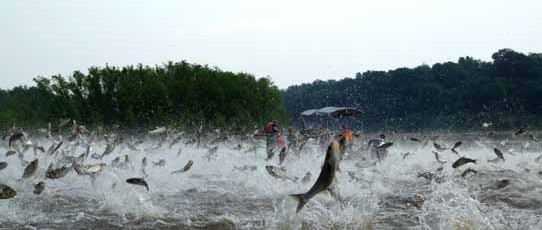Sixty-nine of180 aquatic invasive species (AIS) in the Great Lakes region are fish, many of which pose threats to native species and ecosystem functioning. One potential pathway for AIS introductions is the commercial bait trade; anglers commonly release unused bait fish back into lakes and streams, despite current regulations and management in the Great Lakes region. Previous surveillance efforts of this AIS pathway relied on time consuming and expensive visual inspection of live bait fish in bait and tackle shops. A trained individual identified hard-to-distinguish small and juvenile fish species.
The National Centers for Coastal Ocean Science sponsored research by the University of Notre Dame on forecasting the spread and biological-economic impacts of AIS in the Great Lakes. Scientists previously developed molecular genetic techniques using environmental DNA (eDNA) as a molecular surveillance tool to efficiently detect species at low abundances. The project identified a new use of eDNA to efficiently screen bait fish samples for multiple AIS transportable in the bait trade.

Based on the likelihood of transport, researchers selected bighead carp, silver carp, round goby, tubenose goby, Eurasian rudd, and goldfish for eDNA surveillance, collecting a total of 576 eDNA samples from retail vendors over two years. Ofthe576 bait shop samples, 27 (4.7%) tested positive for one of the six target species.
This research shows the commercial bait trade has potential as a futureAIS threat. Successful AIS prevention must consider all potential vectors and pathways, and in the case of the bait trade, additional strategies to prevent future introductions. The scientific journal Conservation Biology published the results on August 28.
For more information, contact Felix.Martinez@noaa.gov.
